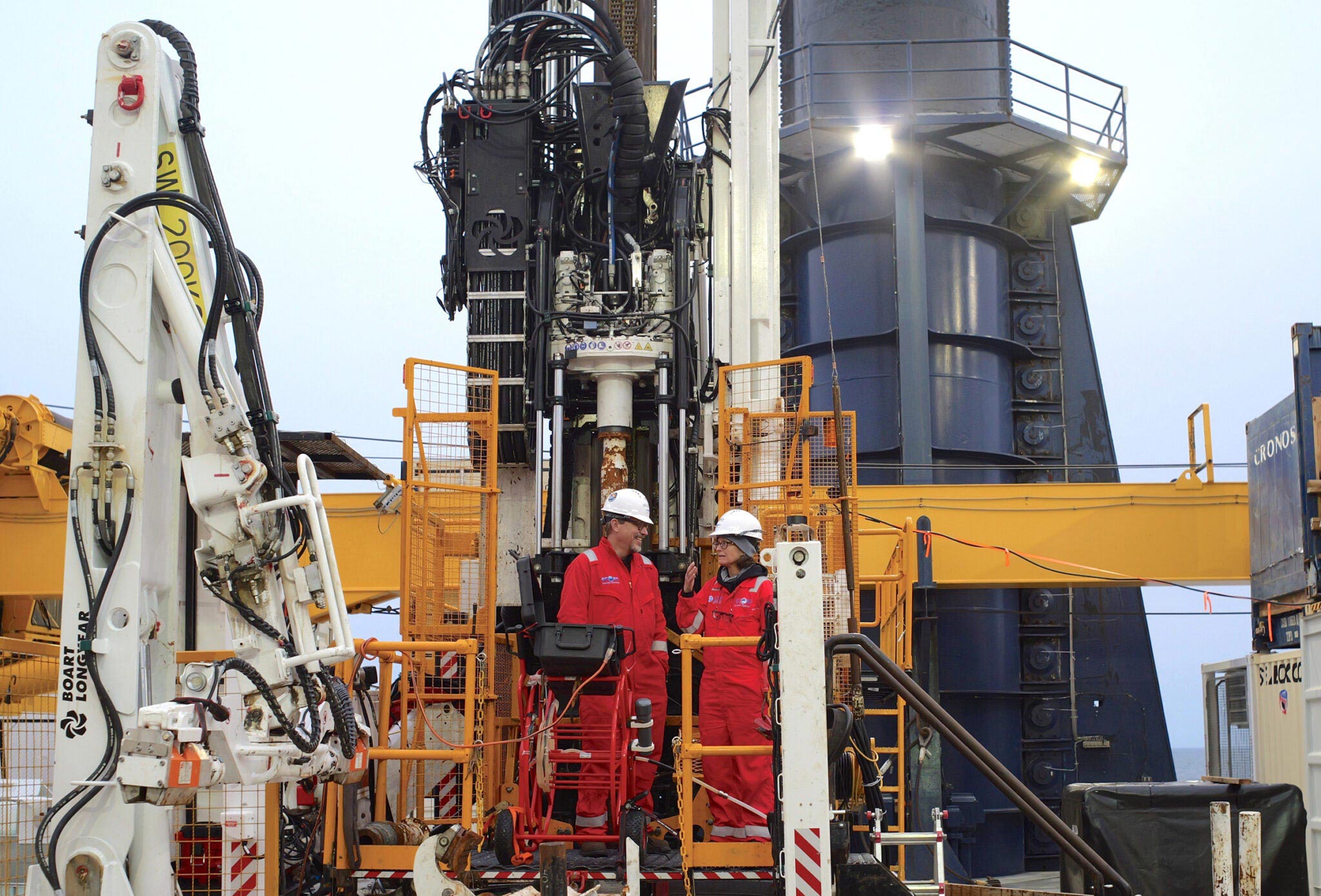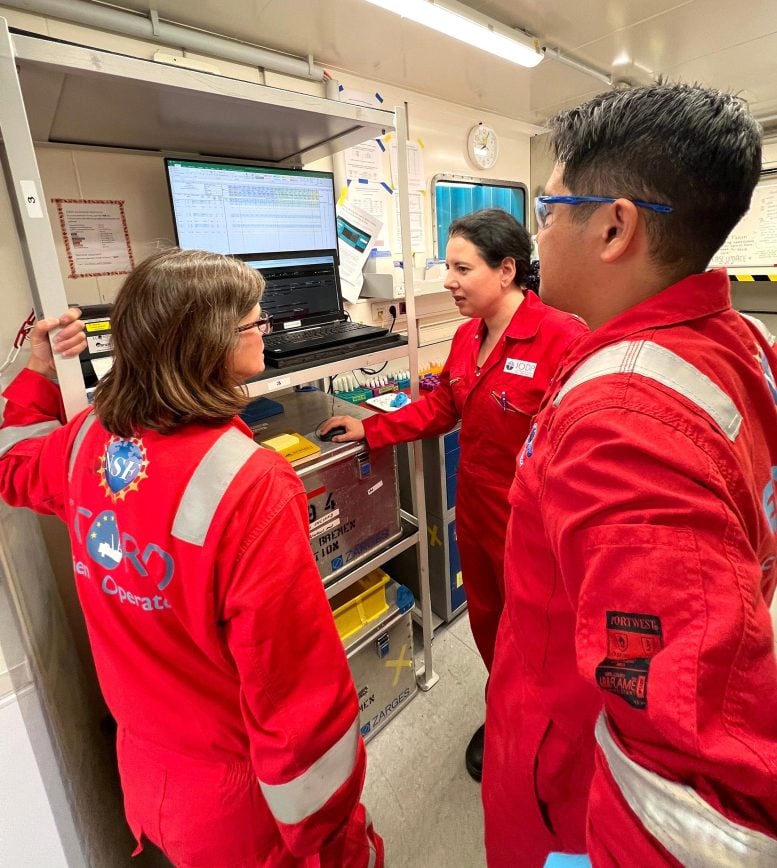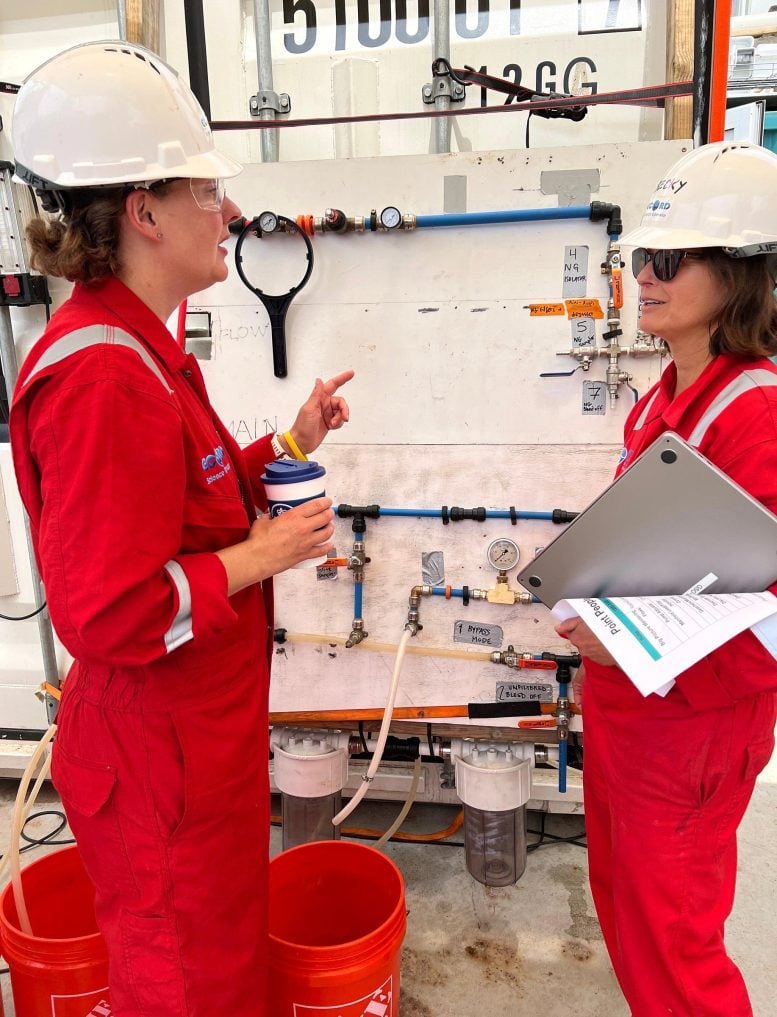Scientists Discover Mysterious Freshwater Reservoir Beneath the Ocean Floor. How Did It Get There?

A team drilled offshore Nantucket and recovered cores with water near drinking quality. Studies will trace nitrogen cycling and measure the age of this subseafloor reservoir.
How did freshened water come to be trapped beneath the New England Shelf, how long has it remained there, and what volume does it represent?
Rebecca Robinson, a professor at the University of Rhode Island’s Graduate School of Oceanography, is investigating these questions by analyzing material collected from three offshore sites near Nantucket.
Robinson was one of three lead scientists directing the New England Shelf Hydrogeology expedition, a collaborative effort involving 41 researchers from multiple nations and disciplines. Over the course of 74 days at sea, the team recovered water and sediment from the subseafloor, producing 718 cores with a combined length of more than 871 meters. These samples are now being studied in laboratories to uncover the history and characteristics of the offshore reservoir.
Unusually fresh water below the seafloor
“Sampling of this offshore freshened groundwater to the extent that we can make comprehensive geochemical assessments of its history, including its age, is unprecedented in scientific ocean drilling,” said Robinson.
The salinity levels of sediments below the seafloor are typically close to those in the overlying ocean, yet offshore New England, the subseafloor contains an unusually large reservoir of freshened water.

“The sheer freshness of the water, which was close to drinking water limits, was a surprise to me,” said Robinson. “I didn’t think freshened meant to the level of oceanic salinities, but I also didn’t think it would be so close to what we get out of the taps.”
Drilling challenges and success offshore
The expedition was carried out by the European Consortium for Ocean Research Drilling under the framework of the International Ocean Drilling Programme (IODP³). A 185-foot liftboat fitted with a compact drilling rig was used to extract 50,000 liters of water from multiple subseafloor depths.
“It was a challenge to pump significant amounts of groundwater out of the wells without destabilizing them,” said Robinson. “To prevent a column of sediment from collapsing, we had to be strategic about where we were pumping, the flow rate through the equipment, and where we placed our equipment. These were variables we learned to optimize.”
Probing the history of nitrogen cycling
Robinson was pleased with the results of the drilling operation.
“I am thrilled with our success in sampling such difficult formations and with the astonishing amount of water we were able to recover for science,” said Robinson.
Robinson will study the origins and history of the nitrogen in the groundwater by examining the composition of the samples in her lab.

“We will study the nitrogen cycling of the water and how it is impacted by the freshened water,” said Robinson. “All organisms need nitrogen for life, so its cycling marks different types of microbial processing that occurs. Learning what happens along its flow path can tell us something about its history.”
Robinson will also measure the concentrations and the isotopic composition of nitrogen using an isotope ratio mass spectrometer. The age of the water will be measured by other researchers using radiogenic isotopes, such as carbon-14 and helium-4.
Collaboration and future research plans
The other two chief scientists on the expedition were Professor Brandon Dugan of the Colorado School of Mines and Professor Karen Johannesson of the University of Massachusetts Boston. The full science team will convene at the University of Bremen’s core repository in Bremen, Germany in January and February 2026 to further examine the cores, collect more data, and write preliminary reports about the initial findings.
The cores will be archived and made accessible for further scientific research for the scientific community after a one year moratorium period. All expedition data will be open access and resulting outcomes will be published.
The expedition was co-funded by IODP³ and the National Science Foundation.
Never miss a breakthrough: Join the SciTechDaily newsletter.
Source link

